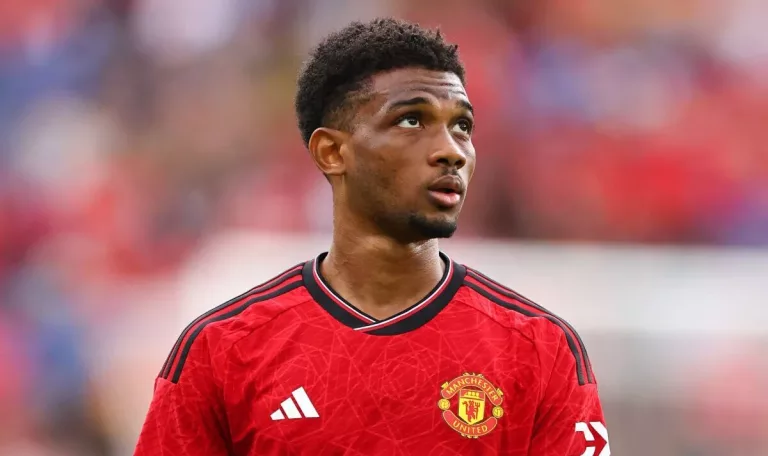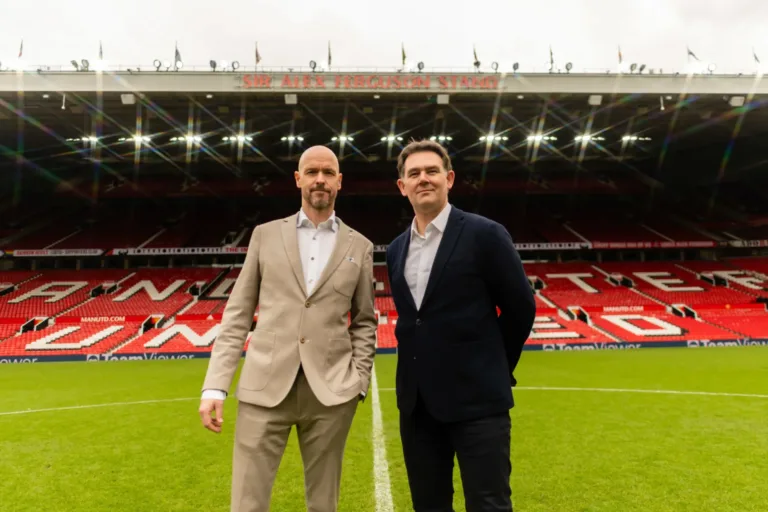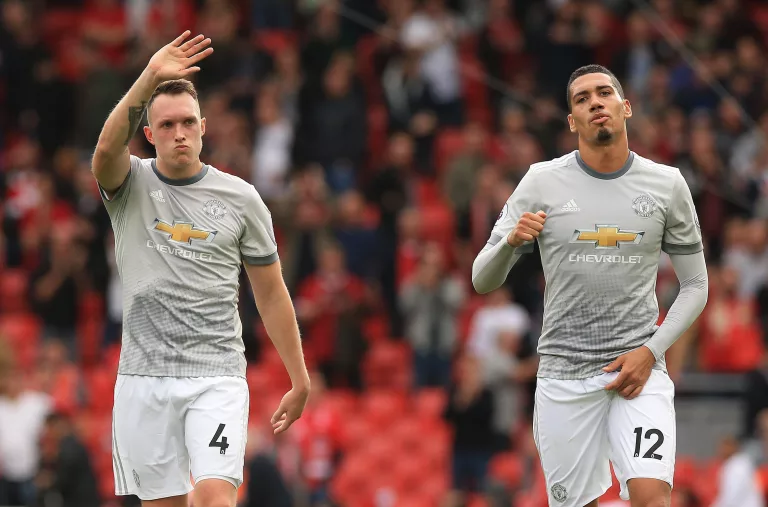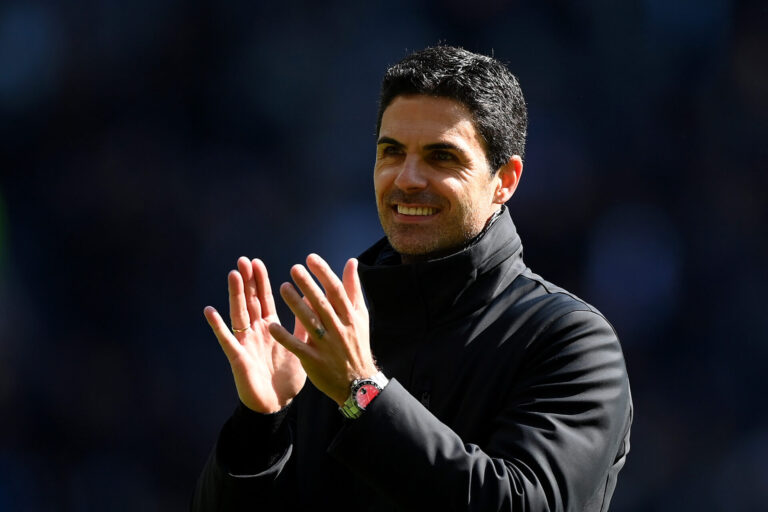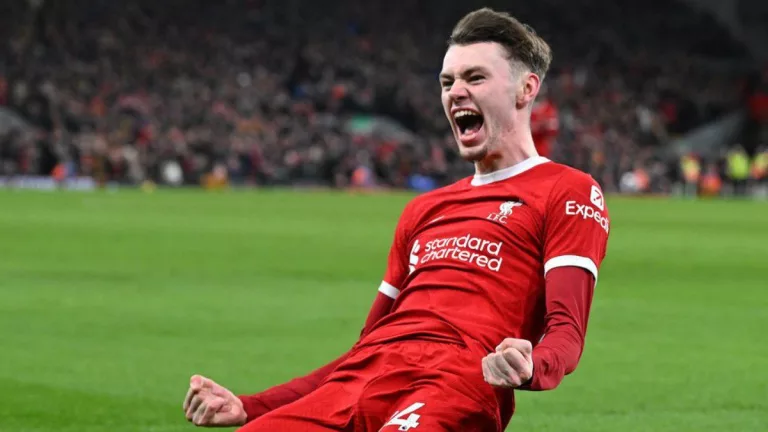The High Line: It Wasn’t Born In 2010
Evolution is a fact of life. There is no escaping change, no matter the subject, no matter the environment. Everything changes. Everyone and every object or subject strives to improve and grow to a higher level, and football is no different.
It’s changed since the past, our great old sport. There’s no denying that. Full-backs come central a lot more, wingers have different roles and midfielders are more specialised in their tasks as opposed to the old guild which was multi-faceted. There are a lot of different aspects to the modern game, but the principles remain the same. One thing is for certain however, the high line was not born in 2010.

The High Line:
There is now an ongoing narrative that the likes of Steve Bruce, Nemanja Vidic and many more footballers from the past would not be able to sustain the demands of modern football due to their inability to play in a high line. Many have pointed towards these two particular players and their lack of pace as a breaking point in their abilities to match the modern-day calls for what a defender must do for their side. Defending on the halfway line. Following midfielders into the middle of the park, even false nines into positions they probably don’t want to follow them into.
I wanted to properly analyze this claim, so I did what any great journalist would do. I went back and watched Steve Bruce and Gary Pallister play a high line against West Ham in April 1992. And also had a nice look at Manchester United’s tactics in the 2007/08 season where they won the Champions League and the Premier League.
During that campaign, Sir Alex deployed a man-to-man counter-pressing system in some games to allow United to force mistakes high up the pitch. This was during the days when teams would usually deploy a 2 man strike force, which meant Ferdinand and Vidic would be left alone with two strikers to mark as the two full-backs pressed high onto the opposition’s wingers. This would of course be in a high line, leaving the two United defenders vulnerable.
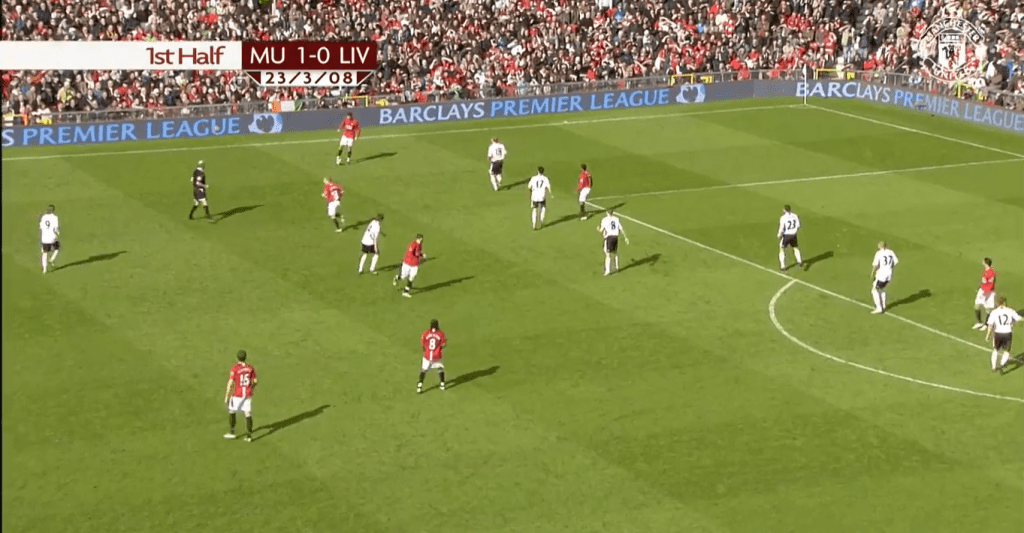
United’s entire team bar Ferdinand and Vidic seen here pushing Liverpool back, with the threat of Torres on the counter something for the Reds to worry about.
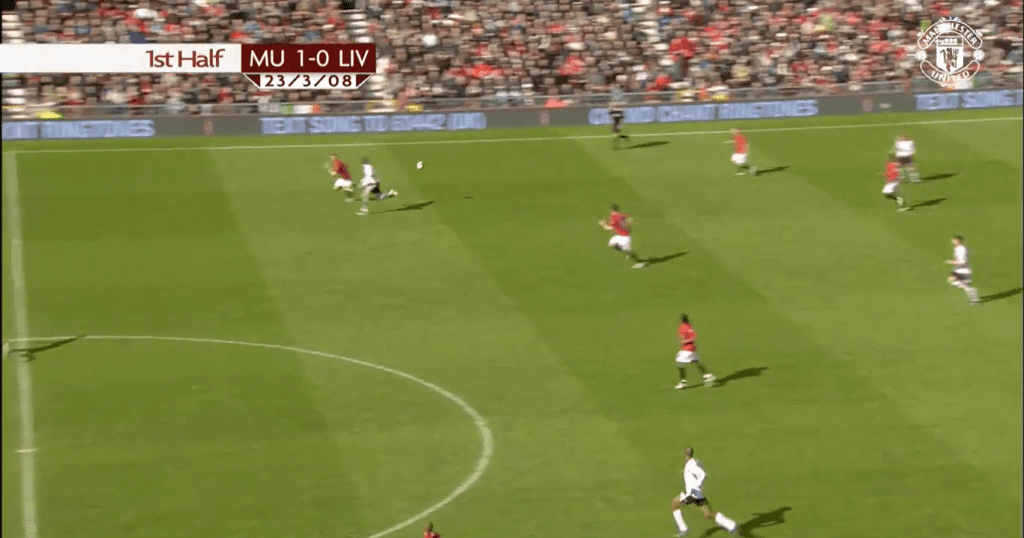
Vidic pushed right up the pitch, with Ferdinand covering on the halfway line as a sweeper. A high line. It’s been around a long time and there are numerous more examples of this during the 07/08 campaign. United did like to defend in a 4-1-4-1 mid-block at times, but they also liked to push high to try and force mistakes. It wasn’t a one-way system, and they could change it if they felt they needed to within a particular game.

This is a picture of that as per Statman Dave in that exact game, which led to a goal United scored from the high press courtesy of the full-backs stepping high into midfield to intercept the ball. Defenders pre-2010 were not camped back at the 18-yard line hoping their wingers could bail them out on the counterattack. They were proactive and front-footed, especially in the best sides on the planet. Manchester United were arguably the best side in world football during this campaign, and you can’t become that by being passive. It’s almost impossible.
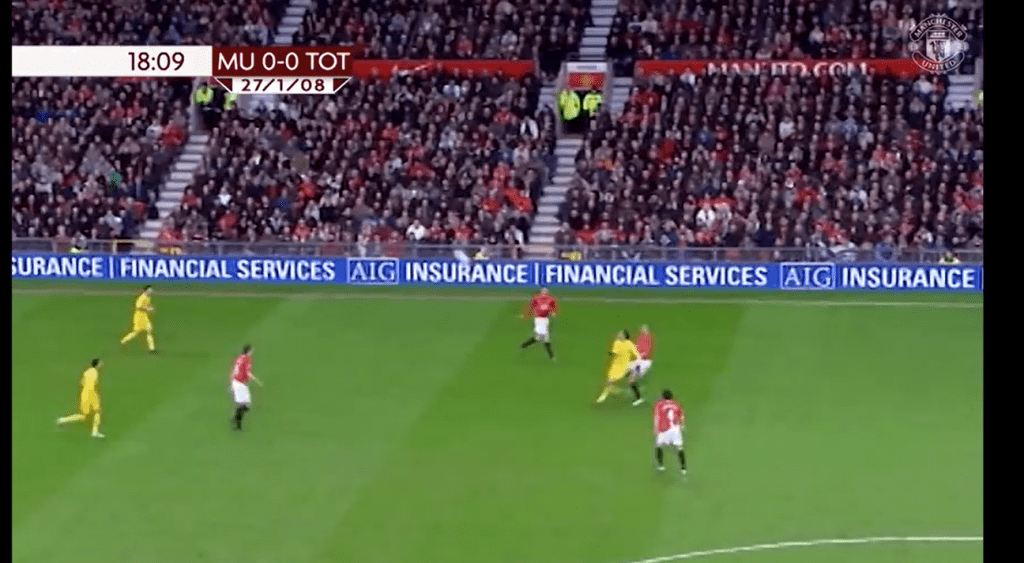
There are numerous more examples of either Vidic or Ferdinand defending in a high line in 2007 and 2008 for Manchester United, even against teams who could easily cause them a threat due to the line. This was Ferdinand against Spurs in a 3-1 win for Ferguson’s side.
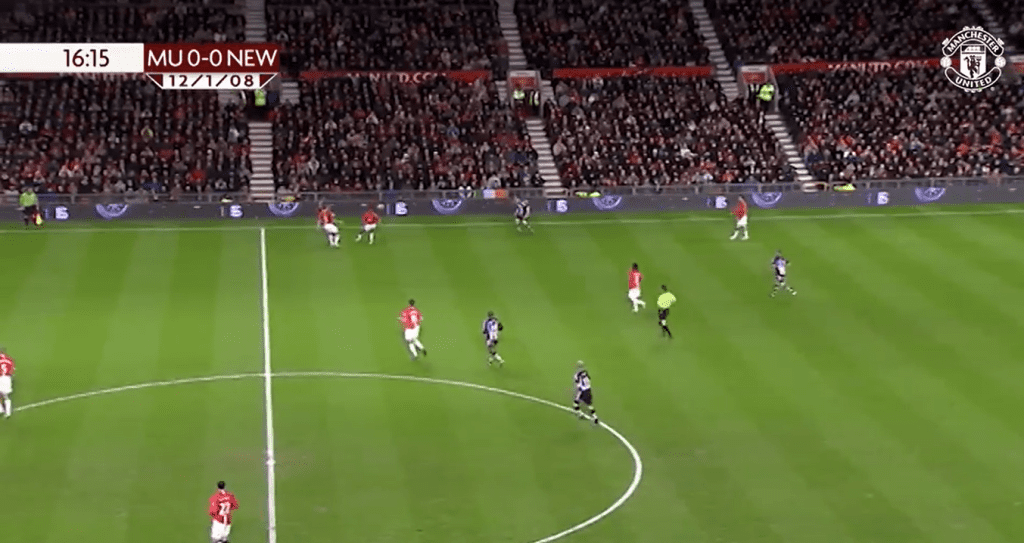
Here’s another example of Vidic being the aggressor again and Ferdinand being the sweeper to clean up the action in a similar method to what was employed by the pair against Liverpool. A front-footed pressing approach to try and force the opponent to make mistakes in their half and allow Manchester United to counter from the press if they won the ball. Counter pressing. It’s been around aons, it’s not a new concept and modern footballers did not create all these new buzzwords that float around the football sphere at the moment.
The High Line Way Back When:
We’ve shown Vidic and Ferdinand defending in a high line, but what about Steve Bruce and Alex Ferguson’s sides back in 1992? Bruce admittedly lacked a lot of pace but what he lacked in pace he made up for in anticipation. He also played alongside a player who in Alex Ferguson’s own words was the faster footballer he’d ever managed at Manchester United in the shape of Gary Pallister. The pair formed a dynamic duo during the early years of United’s rise to power in English football, but the question is did they do it while playing a high line?
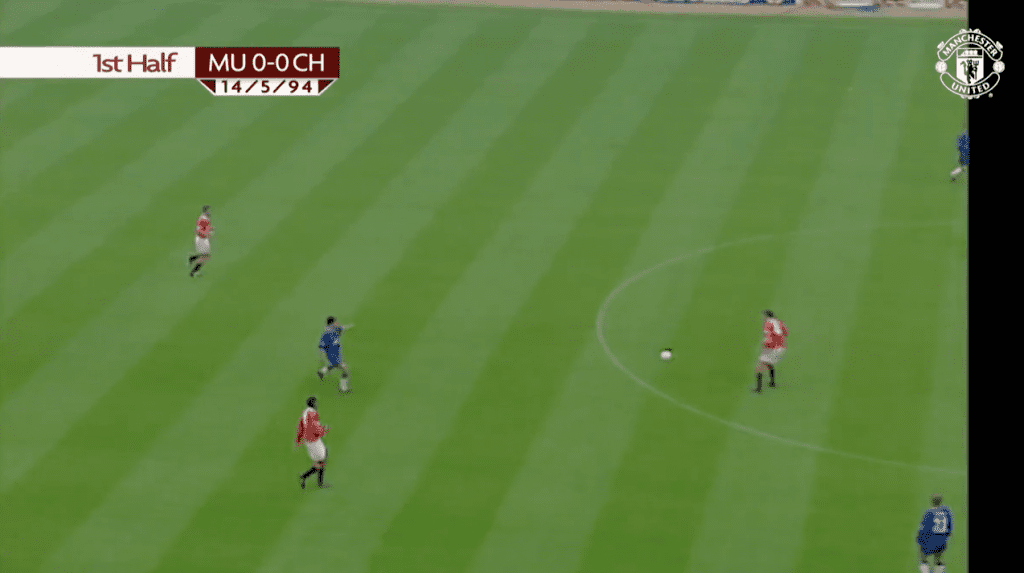
They did. Here’s Steve Bruce, 6 minutes into an FA Cup final back in 1994 against Chelsea stepping into midfield from a loose pass in a high line alongside Pallister. This was 2 minutes after the United defender surged into midfield from defence to try and launch an attack for his side. United started this game on the front foot from minute one and a huge part of that was the advanced positions of the two full-backs Paul Parker and Denis Irwin, as well as the advanced starting positions of both Bruce and Pallister.
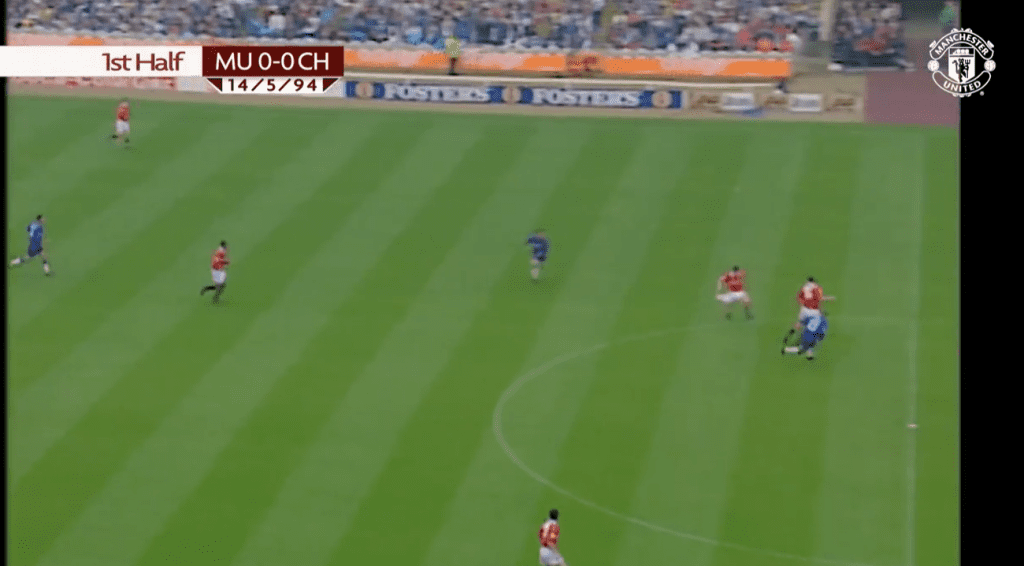
To prove how high that line was, here’s three of Manchester United’s backline all within the same spaces on the halfway line clearing a Chelsea ball that was pumped down the pitch due to their inability to play out successfully. Ferguson’s United had the Blues pinned back to the edge of their box, due to the high line being deployed.
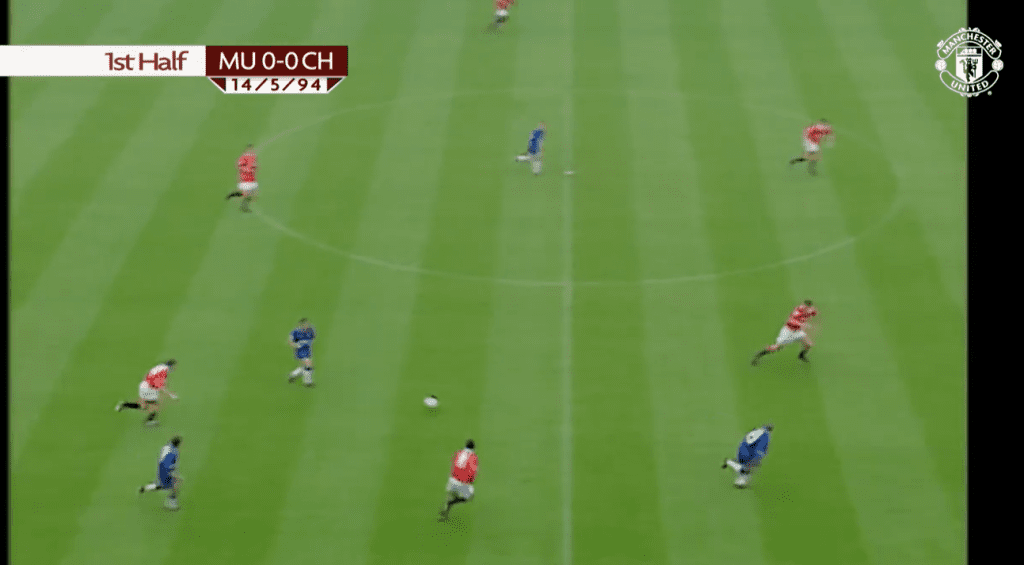
This is how high they were when United lost the ball in midfield. This came from an uncharacteristic Roy Keane slip in the middle of the park and Chelsea tried to transition to that point. Bruce and Pallister are as high up the pitch as you’d associate with this new Unai Emery line that Aston Villa play or even the high line Liverpool play under Jurgen Klopp. It’s not a new concept. It’s been in football for a long long time and those who have been watching it since that time are not surprised to see the rise of the high line in the modern game.

What Does The High Line Give You?
It allows you to try and pin your opponents back in their half. The key point when pressing is the spaces between midfield and defence. If your midfield is pressing high and your defence isn’t following suit, that creates large spaces in the middle of the park for the opposition to play into. If the ball gets into those areas, it’s very hard for the defence to defend due to the sheer amount of room and the momentum of the attacking players running right towards them.
This exact issue has been evident with Manchester United this season. In a lot of games, Erik ten Hag’s side are not committing fully to the press, and teams can pierce through the spaces into the chasm between defence and midfield as easily as a knife through butter. It’s been happening all season, starting with match day one against Wolves and still being on show on Saturday against Fulham.
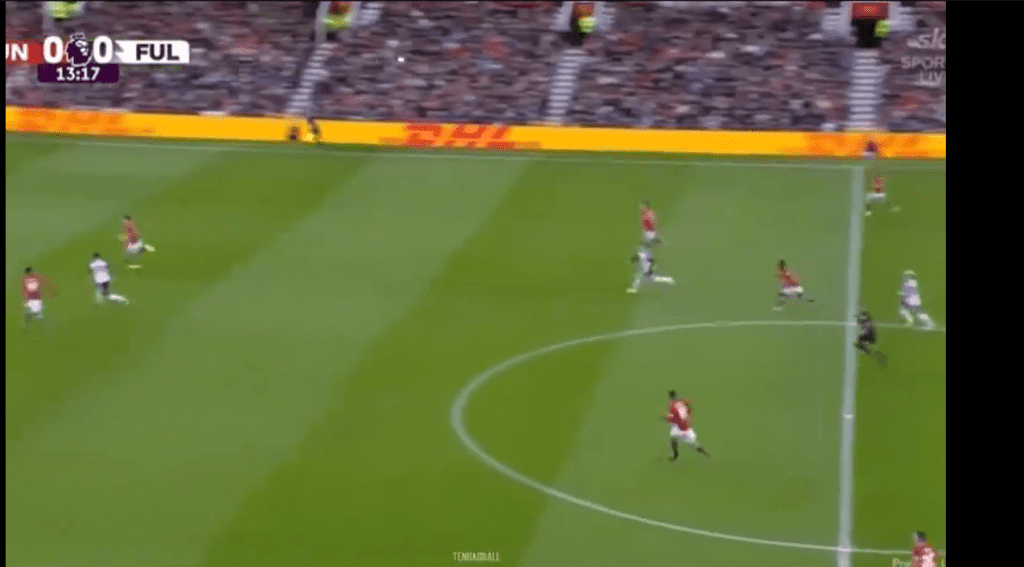
This picture perfectly encapsulates the issues with not pressing as a unit. Even if the defence deals with the initial ball forward, Fulham already have players in spaces to pick up the second ball and spring another attack. Ralf Rangnick once said a little bit of pressing is like a little bit of pregnant. You’re either pregnant or you’re not, and you’re either pressing or you’re not. You can’t have one-half the team press and then not commit the defence to the high line.
A high line allows you to press the opponents into making mistakes within their half, hopefully opening up an opportunity for you to score a goal using one or two passes due to the proximity to the opposition’s net. Jurgen Klopp once said no playmaker in the world can be as good as counter-pressing, because when done right you create clear goalscoring opportunities for your team continuously without one.
The main point, however, is that Jurgen Klopp as amazing as a manager as he is, did not invent counter-pressing. Virgil Van Dijk is not the first defender to play in a high line, and football, while it may have changed, has kept the same principles from its inception until now.
Read More Attacking Football:
- Who Is Amad Diallo? Unravelling The Story Of Manchester United’s Rising Star
- My Tactical Sunday: Chelsea vs Manchester City
- The Problem With Erik ten Hag
- How Many People Play Fantasy Premier League (FPL)?
- Kaide Gordon: What Has Happened With Liverpool’s Promising Star?


